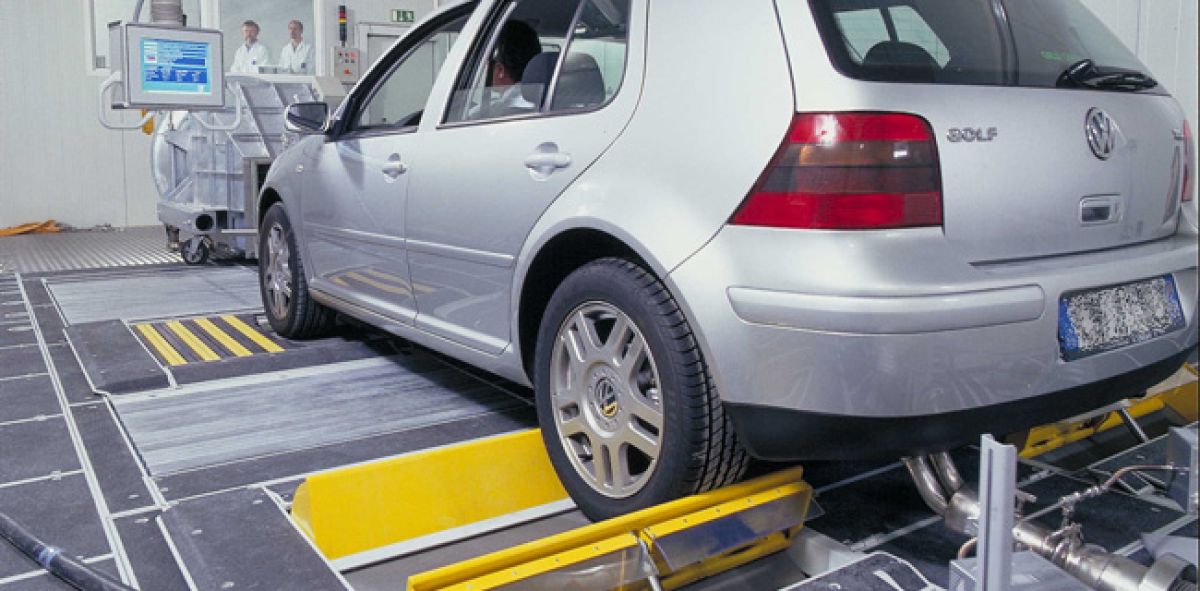The International Council on Clean Transportation (ICCT), comprised of colleagues from the United States, China, and Germany, tested 73 diesel vehicles meeting the Euro 6 standards for diesel passenger cars. They used a chassis dynamometer for the European approach cycle cold engine start (NEDC) and the new Worldwide Light-duty Test Cycle (WLTC) hot-start method. The results show a large disparity between the NEDC tests and the WLTC tests for NOx emissions.
NOx, or notrigen oxides, are one of the primary gases emitted by combustion vehicles that contribute to smog and other air pollution. Currently, in Europe and the United States, the test procedures for NOx emissions are based on stationary, linear runs of the engine with capture of gases from the exhaust pipe. A new world standard test, the WLTC, has been created to more accurately simulate real-world conditions and driving for emissions testing. The result, according to this ICCT study, is that in the real world, NOx emissions are far worse than Euro 6 standard testing would indicate for diesel engines.
Three NOx control technologies are used in today's passenger diesel vehicles. Exhaust gas recirculation (EGR) sends gases back into the combustion chambers for re-burn and to help cool the chambers for more efficient burns thereafter. Lean-burn NOx traps (LNT) use a catalyst to capture NOx during lean engine (low-fuel) operation. During fuel-rich operation, the NOx is returned to the combustion chambers to be burnt. The third is selective catalytic reduction (SCR). This uses a catalyst and urea solution to capture NOx from the exhaust, storing the NOx in the urea fluid for later dumping.
All of these methods have their strong and weak points. In the ICCT testing, EGR and SCR vehicles had marginally better performance in WLTC testing. For the study, chassis dynamometer testing was conducted by the ADAC (Allgemeiner Deutscher Automobil-Club), the largest car club in Europe. Emissions were measured over both NEDC (cold-start) and WLTC 2.0 (hot-start) driving cycles. Compared with NEDC, WLTC has a higher maximum velocity (131.3 vs. 120.0 km/h, or 81.50 vs. 74.56 mph); more frequent and harder accelerations; and a smaller share of idling time (13.0% vs 23.7% of total cycle time). WLTC is considered more representative of real-world conditions.
The results found that average NOx emissions in WLTC tests were five times higher than the average for NEDC tests. Of the 73 vehicles tested, 64 met Euro 6 standards in NEDC tests with the rest only moderately (sub-0.016 g/km) exceeding requirements. With WLTC, however, only 27 percent of the vehicles met Euro 6 standards for NOx emissions.
The study's conclusions were the obvious. Euro 6 NEDC testing standards are outdated and only good on paper. The study did not look at the mandated real-driving emissions (RDE), but the study authors concede that RDE will be much more stringent than even WLTC is.






Comments
AARON,
Permalink
AARON,
emission results might be disparate (variable) but they are NOT disparaging (derogatory, etc.)